“Do we want to have 50,000 people a week spending 10 cents each or a thousand people a week spending $2,000? We’ll go the latter.” — Simon Latchford
As New South Wales’ first eco-certified destination, Coffs Coast demonstrates how “appropriate growth” can preserve what makes a place special while driving economic prosperity. Simon Latchford from the City of Coffs Harbour explains how this region of 80,000 people has chosen quality over quantity. “Do we want to have 50,000 people a week spending 10 cents each or 1,000 people a week spending $2,000? We’ll go the latter,” he says.
The region’s approach centres on protecting its greatest asset—the environment, which includes 13 national parks, the state’s oldest marine park, and 60 kilometers of coastline. The City of Coffs Coast has an annual $1.5 million environmental levy of $44 per household, as well as community volunteer conservation programs.
The award-winning Bularri Muurlay Nyanggan (Two Path Strong) initiative, led by the Gumbaynggirr people, uses tourism revenue to support cultural preservation.
This program funds the first Indigenous bilingual school in New South Wales while offering cultural experiences, such as stand-up paddleboard tours, in which Aboriginal guides share their language and traditional knowledge.
When it comes to tourism experiences, residents understand that their relaxed semi-tropical lifestyle, diverse ecosystems, and multicultural heritage create the “place of plenty” that attracts visitors. By reinvesting tourism funds into community programs, Coffs Harbour offers a compelling example of what can happen when tourism serves a positive end.
You’ll also learn:
- How Coffs Coast’s $1.5 million environmental levy funds biodiversity projects.
- How volunteer conservation programs engage visitors in hands-on environmental stewardship from mangrove restoration to wildlife rehabilitation.
- How the region’s quality-over-quantity approach attracts higher-spending visitors while preserving the natural assets that make it special.
- How community partnerships between multiple councils are creating one of Australia’s first sustainable tourism regions.
Show notes
Bularri Muurlay Nyanggan (Two Path Strong) Aboriginal Corporation — The award-winning Indigenous-led initiative using tourism revenue to fund cultural preservation and Australia’s first Indigenous bilingual school.
City of Coffs Harbour — The local government authority leading sustainable tourism development and eco-certification initiatives on the Coffs Coast.
Coffs Coast Wildlife Sanctuary — A rehabilitation centre where visitors can contribute to wildlife conservation efforts and learn about native species protection.
Muttonbird Island — A unique nature reserve and cultural site offering whale watching opportunities and insight into traditional Indigenous connections to land and sea.
Images provided by City of Coffs Harbour.
Episode transcript
Simon Latchford: Do we want to have 50,000 people a week spending 10 cents each, or do we want to have a thousand people a week spending $2,000? We’ll go with the latter.
Peter McCully: Welcome to Travel Beyond. I’m Peter McCully for Destination Think. On this episode, we look at travel’s role in making a better world, and we highlight leading destinations and change makers. Our guests are taking local action that the world can learn from, and they’re helping to regenerate ecosystems, communities, and economies, and they’re often making positive change happen from the bottom up.
Many of the voices we’ve highlighted are part of the Destination Think collective, a peer group of more than 20 ambitious, forward-thinking destinations working towards a better future for travel and the planet. Located in New South Wales, Australia, the Coffs Coast region demonstrates how destinations can achieve sustainable growth and protect the environment by choosing appropriate development over unlimited expansion.
With 13 national parks, the state’s oldest marine park, and 60 kilometers of coastline, Coffs Coast has embedded sustainability into everything from a $1.5 million annual environmental levy to comprehensive volunteer conservation programs. The region’s award-winning Giinagay Way Strong initiative showcases how tourism revenue helps support cultural preservation, funding Australia’s first Indigenous bilingual school while offering authentic cultural experiences led by local peoples. We spoke with Simon Latchford from the City of Coffs Harbour about how environmental stewardship creates a competitive advantage and why appropriate growth preserves what makes a destination special while driving economic prosperity.
Simon Latchford: My name’s Simon Latchford. I work for the City of Coffs Harbour in New South Wales. We’re north of central New South Wales, and I’m fortunate enough to head up economic development and tourism for this fabulous region.
Peter McCully: Simon, your region promotes itself as a place of plenty. Can you paint us a picture of what that looks like and feels like for visitors?
Simon Latchford: Where did “place of plenty” come from? Just to start from there. The Indigenous people, our wonderful Indigenous people, came up with that, and they got it right. Remember that they don’t discriminate between or draw a distinction between land and water. They see them as one, which was a powerful lesson for me because I’d always seen them as separate. I was wrong.
Place of plenty—it’s just so much to do, but it’s also a wonderful place for doing nothing. It’s always been a holiday destination. It’s been, and is, a favourite for many generations of Australians and international guests. Lots of small businesses are supported and staffed by local people, which I think is always a benefit. They actually care about it. It’s the town in which they, or the region in which they, were born. A lot of them have raised children and buried their loved ones. The whole gamut that is life. Are they connected? Yes, they’re very connected, and that makes a difference because they become passionate. I think that’s incredibly important.
It’s a place where people get to walk on the beach before work. It’s not a freeway. You can go to beaches all over here where you can literally have it largely to yourself, if not to yourself entirely. In a crazy world where we’ve got huge populations, it’s cool to be able to go to places where you can, as corny as it sounds, look around after the tide and see only your footprints. There aren’t 5 million footprints, which I think is really great.
We’re a region of very diverse places. We have seaside towns, rural villages, retail and city centres, as most places do. But it’s perfect for spreading out and relaxing. Probably if I had to come up with one word to describe the region, it would be “surprise.” Many people come here, and they’re looking forward to the beaches. They have an expectation of Australia—of course, we have thousands of beaches in Australia, and most of them are really good.
Where we’re significantly different is within a 15-minute drive from here, on the speed limit, I can take you into the Gondwana rainforest country, which is—we could be in the Amazon. It is extraordinary. We have a large film conference here most years, and we bring people in from North America, Europe, and all over the world to examine the place to see if it’s appropriate for filming movies or documentaries or both.
Our rainforest, our waterfalls, the Great Dividing Range—I can literally look through the window as we speak, and it’s right there. The ocean is directly behind me. In other words, I can take you to very different worlds very quickly without stress.
We have wonderful walking trails, which obviously follow through. We also have islands off the coast here. Now, they’re not what people would think of as resort islands, which is cool. We have things like South Solitary Island, where people can visit a wonderful old lighthouse. It’s called South Solitary because it is solitary. The diving in and around that region, as it is throughout the entire region, blows people away because they all have an expectation—and I used to be one of them—that the Great Barrier Reef stops at the Queensland border. It doesn’t. I can literally give a sneak preview into what’s under the water here, and we’ll talk about this later.
We have an extraordinary diversity of events, and we’re on all the time. We think we’re probably number one regional city in Australia for events. That pretty much sums it up: place of plenty.
Peter McCully: Simon, how does the experience change throughout the year? What’s special about each season for different types of travellers?
Simon Latchford: It’s a mild winter because of where we are. We are roughly—to give people an idea, I’ll talk in miles because it’s easier for most people who will be listening to this—we’re roughly halfway between Brisbane in Queensland, the capital city of Queensland, and Sydney, the capital city of New South Wales, known to most people for the Opera House and Sydney Harbour Bridge, amongst other things. We’re really well placed in that we’re roughly halfway, about 500 miles to Sydney and roughly 500 miles to Brisbane over the Queensland border, which includes the Gold Coast, slightly to the south of Brisbane.
We’re in a great position. We are roughly around 20 degrees Celsius here. On the weekend, we were around 23 degrees Celsius, which is a pretty nice day. You’re wearing shorts and a shirt. It’s a pleasant environment, and the nights are cool, which means if you like your fires and you like curling up under a blanket—I don’t like being hot at night. I quite enjoy the summer. I’m a summer person, but I don’t like being hot at night, and I don’t like air conditioners running all night. We are not that sort of environment.
Our summers are warm, perfect for water activities, which, of course, we have a huge volume of water here, both in our rivers, creeks, and, of course, the ocean. Being able to float down the waterways—we’ve got 60 kilometers of coastline. The summer school holidays in particular are perfect for families, which is why we get the big uplift in our visitation numbers.
Spring and autumn are probably the best of both seasons for just the reasons we were talking about. It’s not too hot, it’s not too cold. The nights are pleasant. It’s just a good—that sparkling sort of feeling you get on those cracker days. Regardless of where you’re from, it’s just great to be alive.
Then, the seasonal calendar of activities or events—we sculpture them or time them to complement the weather.
Peter McCully: If you could bring anyone in the world to visit you on the Coffs Coast, who would it be and what would you want to show them?
Simon Latchford: Our biggest single challenge is destination awareness. As you well know and the listeners understand, you can’t go to a destination you’ve never heard of. That’s with my tourism hat on. I’ll now change hats and put my economic development hat on and say neither can you invest in a destination you’ve never heard of, let alone an opportunity within that destination you’ve never heard of.
With that in mind, here’s your answer to your question: Lee Sorensen, who specializes in partnerships. He’s with Tourism Australia. He is someone that I’ve worked with extensively for many years. I have literally invited him to other destinations that were largely unknown. I started in tourism in 1994, so I’ve been around a long time, like he has, and I know a good thing when I see it. Because I’ve been lucky enough to work in four of the premier tourism destinations—they weren’t when we started, but they are now—he and I have a bit of credibility. I can pick the phone up, say, “Hey Lee, come over to Western Australia,” or where we are now in Coffs Harbour, wherever he might be, and say, “You’ve got to come and have a look at this.”
He does, and then from that, Tourism Australia has played a wonderful role and continues to play a wonderful role in helping to bring, in an appropriate way, rockstar destinations to the world that have previously been a secret. This is one of those secrets we’re getting out. We’ve got work to do.
That would be what I would do: show them the diversity. Show him the diversity of the region. Show him why this place is special. He’d get it in about 15 minutes, I’m guessing.
Peter McCully: You’ve talked a lot about diversity in the different seasons. What’s one thing you always take friends to do when they visit you in Coffs?
Simon Latchford: Some people listening to this might think this is a bit odd, but I love Muttonbird Island. Muttonbird Island is clearly named because muttonbirds go there. When they migrate, what are they thinking, right? They fly all the way across to Asia, and then they take a breath, and then they fly all the way back here and raise their chicks on this little island that’s smack off the front of Coffs Harbour.
You and I could walk to Muttonbird Island—I mean walk to Muttonbird Island—in probably, I don’t know, not from here, but once we’re down on the beach precinct, down the front, we would be at the bottom of Muttonbird Island in about 10 to 15 minutes. What I love about it is it’s like a place that’s untouched by humans. It’s obviously very deeply respected. We have to be very careful where we walk because, of course, muttonbirds, if you’re not familiar with them, actually dig these wonderful burrows. I don’t mean rabbit warrens—pretty shallow, but clever little enclaves in this amazing grass that I’ve never seen anywhere.
The island’s beautiful. You have this extraordinary view of the ocean and the islands off the coast. Once you get to the other side of Muttonbird, which doesn’t take long—maybe 15 minutes at an amble—we have a really good walking track that keeps people where they can see everything but not damage it.
We then get to these stations, as I call them, or lookouts would probably be a more familiar word. For example, during whale season, when they’re migrating from south to north, it’s literally like you can just sit down on a bench. What would you like to watch go past? It’s a freeway of whales. Oh, and other things too. We have dolphins, turtles, a very large green turtle population. Just being able to sit there and recalibrate as a human, put the mobile phone down other than to possibly take a photo or a video—it’s just an amazing thing. You just never get tired of looking at it.
You can see them offshore. You can see them very close to shore with their calves as they come up and down, whether they’re going north or south. It’s wonderful to think it wasn’t that long ago we were killing these wonderful animals and to see the good that we’ve done as human beings. Now that we’re not killing them, you can see them coming back in extraordinary numbers. That, in itself, just as a human—you don’t have to be in tourism—being able to see the enormous difference it’s made to the whale populations, we’ve done a good thing, and it’s great to be able to see that.
That would be—that’s a place I take everybody. Lots of other places, but you asked me to nominate one. That’s one.
Peter McCully: Simon, you’ve painted a great picture of the rainforest and the beaches and some of the wildlife. Let’s talk about the people. What makes the folks that live on the Coffs Coast most proud to live there, and what are their community values?
Simon Latchford: Very relaxed lifestyle here. As you can probably imagine in the semi-tropical environment, it’s pretty normal for Australia. We have a vibrant community, and remember, we’re a small region. We’re not Sydney, we’re not Melbourne, and that’s not a criticism of our big sisters. We are a regional area of roughly 80,000 people. That’s our total population over a reasonably narrow but long footprint.
We’re a very connected community. Of all the places I’ve ever worked, this would be at least equal to another region I worked in Queensland, where you get three or four generations of family living here. Lots of heart, lots of history. It’s very important to them, regardless of race, colour, and creed. We have a very multicultural community here, and we have for a very long time. For example, we have a large Sikh population. It’s not just all Anglo-Saxons. Our Indigenous community here is large, and because we’re used to that, it’s a great thing.
People are far more tolerant. There’s a lot more empathy, wanting to learn from each other. It’s also contributed enormously to the food scene, where traditional Australian food was getting a little boring. It’s great to see this diversity. Take Asian food, for just one example. Imagine where we’d be as a world without Asian food. I, for one, would starve to death.
Of course, we also have a deep respect for our local Indigenous culture. Indigenous people are very important to us. We’re very lucky to have them. They’re extraordinary. We respect them, and yes, it’s wonderful to have them as such an important part of our overall region.
It’s also a great place to raise a family, and it’s also a great place to build a business, start a business, buy a business, or work for a business. Like most places in the world, we’re always keen to attract good people to work within those businesses. That’s pretty much about where we are in terms of community values, I guess. If I had to put headings on them, it would be community wellbeing, and by that I mean it’s a vibrant and inclusive place. An active, safe, and healthy community prosperity, particularly in the current national position where—I’ll be careful what I say—but most of us in full-time employment have never experienced a more challenging economic environment than we find ourselves in now.
This is not exclusive to Coffs Harbour. This is national, and I suspect international. It’s inappropriate for me to talk about where you are from, but in terms of my own country and in terms of the province in which I live, work, and raise a family, it’s tough. It’s challenging. There are a lot of people out there who are really hurting. We’re very mindful of that. As a consequence, we are one of the few councils that actually have a homeless strategy. It’s a work in progress. Are we there yet? No, we’re certainly not. Will we ever be there? Probably not, because we’re constantly evolving, and sometimes we go backwards and we learn from that. Bad is good because we learn what not to do.
It’s a place for communities. In other words, liveable neighbourhoods with a defined identity, a natural environment sustained for the future—very important to the community. All of the community. Our environment is, without doubt, our number one asset, and everyone has a very crystal-clear understanding that if we get it wrong and if we wreck that environment, we can’t go and buy a new one. We stuff it up, we stuff it up. Then, finally, community leadership—it’s pretty important, isn’t it? Our leaders give us confidence in the future, and we have effective use of public resources. That pretty much sums it up.
Peter McCully: How do those community values affect the travel experience?
Simon Latchford: I think wellbeing—let’s start with wellbeing. Playgrounds, pools, recreation areas. Our prosperity—in other words, supporting businesses through our Industry Champions programs, networking events. We work closely with our chambers of commerce, delivering our Six Degrees programme for business and sustainability. Historically, it’s been about developing business, and it’s changed gears a little bit now for obvious reasons because of the challenging economic environment nationally.
Therefore, our modus operandi is: let’s work with these businesses, these people who are under stress, who employ people or who are employed, and help find bridges to get them across this economic ravine to get most of them to the other side, to the time when prosperity returns, which it will, because everything’s cyclic. Also, as I said to you before, destination marketing—it’s all about promoting the entire Coffs Coast as the premier place in regional New South Wales to live, work, play, visit, and invest. The City of Coffs Harbour is a leader in ensuring the community and visitors will be able to enjoy our place of plenty for many generations to come. In other words, we’re back to where I said before: the environment must be protected at all costs because if we get it wrong, we don’t get a second chance.
Peter McCully: Simon, you’ve talked about the Indigenous culture in your region. How is the language being revitalised?
Simon Latchford: The land here is the traditional home of the Gumbaynggirr people. They have a really deep connection to the region. As you can imagine, we’re talking 60,000 years. I think that’s pretty deep. I’m a fifth-generation Australian. You look at 60,000 years—it puts it into some sort of perspective, right?
People whose deep connection to the region is reflected in culturally significant sites and stories which have been passed down through generations. Visitors have the rare opportunity through that to engage with this ancient culture and learn about traditions that have been preserved for thousands of years. In 2023, not that long ago, the region’s efforts to honour and celebrate the Gumbaynggirr people earned global acclaim through the Green Destinations Top 100 Story award.
At the heart of this recognition was the Giinagay Way Strong initiative. That’s an award-winning programme led by members of the Gumbaynggirr community. The initiative focuses on language revival and cultural education—pretty critical, right? Not only for us people learning about them but respectfully for Indigenous communities as well, because it’s their language, it’s their culture. If they lose it, we’re going to lose it. I’d love my kids to learn much more about our Indigenous people.
Just learning about those traditions that have been preserved for thousands of years—the initiative also focuses on language revival and offers sustainable tourism experiences while honouring the people and their connection to country. Visitors participating in the Giinagay Way Strong activities will gain a much deeper appreciation of Indigenous people’s heritage while supporting the ongoing revival of their language and culture.
Peter McCully: Simon, you talked about the revitalization of the language. There’s an Indigenous language school. Could you tell us about that?
Simon Latchford: The language school is something that is extraordinary in that there’s only one of them. The Indigenous people of this region have done it themselves. Sure, they’ve had support, but it was their idea. They’ve driven it, they’ve built it, and full kudos to them. Sure, we’ve supported it and been happy to do it, as have other bodies, but to be able to get into that Green Destinations Top 100 Story award globally, I think, is just one example.
The initiative focuses on that language revival and cultural education. Then, through that, they’re offering sustainable tourism experiences. They’re doing it in an honest, legitimate, meaningful way where people can actually see what the real Indigenous culture is, not a manufactured version of it. I think that’s probably the single biggest difference: what it says on the tin is who they are and what they do.
Peter McCully: What kinds of Indigenous tourism experiences are there for folks that are visiting the Coffs Coast? Are there other kinds of cultural and historic experiences as well?
Simon Latchford: The Indigenous people are doing this wonderful stand-up paddleboard tour. It’s led by Aboriginal guides, which I think is also incredibly important. It’s actually the world’s first stand-up paddleboard tour sharing their culture through language in the waterway environment while simultaneously foraging for food. As you and I touched on earlier, the Indigenous people are absolutely right: they do not distinguish between land and sea. Are there lots of fish and shellfish underwater that the Indigenous people could eat? Yes. Is there an extraordinary spiritual history out there? Yes, there is. Same on land, and on it goes.
There’s another one, the Giinagay tourism experience with the Gumbaynggirr people. It’s about their people, their language, and their culture. It takes place in an important cultural site of the Gumbaynggirr people, a stunning location at Sealy Lookout. It takes place within the Ulidarra State Forest. Guests get to bask in the ambience of 360-degree views and immerse themselves in the culture through stories, songs, language, and the uses of native plants. It’s just a really fun outing, and you learn a lot, and it’s a two-way learning. It’s an opportunity for them to explain themselves and what’s important and teach us things we don’t know.
The next one would be Yarrawarra Aboriginal Cultural Centre. Bush tucker—for the listeners who don’t understand, “tucker” is slang in Australia for food. Bush tucker, Indigenous art gallery, they have cultural programs, a conference centre. They carry out events which include art galleries, history story sessions, dance, music, clay modelling, traditional basket weaving, and tours of Aboriginal sites. Saltwater Freshwater Gallery showcases Aboriginal arts and crafts from the mid-north coast. Events, festivals, cultural programmes like canoe building, ceramics, dance, language, music, basket weaving.
Then you’re going to love this one. I think this is really cool. It’s called Saltwater Sisters. I’ll spell “sisters” for you: S-I-S-T-A-S. That delivers inclusive, culturally grounded programs for women and youth of all backgrounds with a very strong focus on marine science education, ocean conservation, cultural connection, and wellbeing. Empowering the next generation to care for sea country through science, storytelling, and community. Highly recommend all of them.
Peter McCully: Simon, Coffs Coast is New South Wales’s first eco-certified destination. What does that mean for visitors who care about sustainable travel, and what can they experience on the Coffs Coast they might not find somewhere else?
Simon Latchford: Being the first to be eco-accredited—for your listeners, it’s quite a process. It’s not something we get out of a cornflakes box. We have to go through very stringent analysis and testing. People who are highly skilled and educated in their respective fields have to come here and make sure that all the hard work we’ve done in making the presentation actually is what we say it is. It’s a big process for us.
To have pioneered that and to be number one is always a good thing, and it shows the mindset of this region from a long time ago. Our environment is our number one asset, and if we get it wrong, we’ve lost it, and that is not acceptable. It’s not going to happen. We can have development, sure. We can grow tourism, sure. The key word before both of those needs to and must always be “appropriate”—appropriate growth and appropriate tourism.
Do we want to have 50,000 people a week spending 10 cents each, or do we want to have a thousand people a week spending $2,000? We’ll go with the latter. We can’t sustain 50,000 people. Yes, we’d make a lot of money, but in two years’ time, we are going to be exhausted. The place will be exhausted. We will possibly ruin it, and we’ll certainly ruin it for future guests, at least for the short term.
We now have a really deep collection, a broad collection too, of eco-certified operators, so it guarantees people that they are going to get an experience that is eco-certified. We also, of course, have a number of certified accommodation providers as well, and that ranges from budget to luxury. I think that’s really important, and that means we’re not throwing tens of tonnes of soap away every year. We’re not flushing bad chemicals down our shower recesses. Our waste isn’t being flushed into the sea. In fact, all of our recycling is literally loaded into semi-trailers every day, and it travels over the Queensland border to an appropriate site in Queensland that can deal with it.
On top of that, we have 13 national parks here, which surprises most people. That includes state forests, of course. We also have New South Wales’s oldest marine park. We are New South Wales’s oldest marine park. You can see we have a long history here of people being very conscious of the environment and putting management strategies in place to ensure that people get to really enjoy it without being treated like school children but understanding that we all have a role to play in leaving it the same as we found it, or perhaps sometimes even better than we found it. That’s cool. That’s certainly important to me.
Peter McCully: On that note, can you tell me about the volunteer and conservation programs that visitors can participate in, and what’s the response been like to those, Simon?
Simon Latchford: Yes. SeaChange Adventures, for example, offers tours where you can help with mangrove restoration at Boambee Creek. Coffs Coast Wildlife Sanctuary is an amazing place. It’s a huge rehabilitation centre—it’s a lot of things, but one of the big roles it plays is a rehabilitation centre. Turtles—big, beautiful, huge, bigger than you and I, amazing green turtles—that get run over by a boat accidentally, or a shark bites a flipper off, or whatever accident. It’s not just turtles—it’s dolphins, it’s all manner of wildlife. Penguins, seals, of course. We have seals go into what’s called the Coffs Coast Wildlife Sanctuary.
Visitors can contribute by visiting the sanctuary when they’re in Coffs. They can donate online. Then there are conservation projects which save lives, all about responsible pet ownership. We have rehabilitation of the sick and injured wildlife, as we’ve been talking about. Education programs for schools, groups, and university students. Then, finally, wildlife rescue. We do that through land, air, and sea—marine life. It covers everything. Anything with a heartbeat gets covered. To answer your question, yes, we do rely on volunteer support.
Peter McCully: Looking ahead five to ten years down the road, what would you like sustainable travel to look like on the Coffs Coast?
Simon Latchford: We are going through a time of great change at the moment. We, as a region, know that we need to grow, and we know we need better accommodation. We know we’ve got to work on our infrastructure. Then we’ve got our visitors who are looking for homestay accommodations—the Airbnbs of the world, things like that, which we have. But we’ve got to bite the bullet on what you and I would call more normal hotel accommodation. Let’s start with four and go to five star. We do not have a four- or five-star hotel. We need one.
We have a very good airport. We are growing our domestic markets now to include not just Sydney but Melbourne, Sydney, Brisbane, and Adelaide. Queensland’s doing very well for us at the moment. Then, through connections to destinations such as Newcastle, we can hook into Perth. We can hook into offshore destinations, going through Asia. We’ve now got a lot of the things, a lot of those rockets on the launch pad, for the sake of an analogy, to find solutions, to resolve all of those things, to start to get us the growth, to get us the accommodation, to create new industries, to support and grow existing ones, to increase visitation, particularly midweek.
We need to do all of that, but we need to do it in an appropriate way. This is where it gets tricky: don’t stuff it up. That’s where we’re at now. It’s going to be a character-building experience. Yes, we need growth. Yes, we need prosperity. It just needs the word “appropriate” in front of it all the time—appropriate, not just growth for growth’s sake.
Peter McCully: What’s the one thing that you would hope travellers take away from their experience in Coffs Coast that goes beyond just having enjoyed the holiday?
Simon Latchford: Obviously, we’d really love people to take away a deeper connection. Just talking for myself, I’m a human being, and I work hard, like we all do. We all know that our world is getting more and more pressured, from technology to AI. The world is going through a challenging time. The economy, everything—there’s a lot of pressure on us. We’re working harder, we’re working longer. Hopefully, we’re working smarter. We’re always on.
To be able to just get off that train every now and again—and I enjoy the train, don’t get me wrong. I love what I do—but to be able to reconnect with my family and to be able to actually go to a region where I’m not just one of 5 million people experiencing it. I can go and find a creek or a river that my family can literally have a picnic on and play around with a canoe and not see anybody. That, to me, is becoming increasingly almost priceless in this world, not just Australia.
Coffs Harbour certainly offers you that. It’s a place to come where you can recalibrate, where you can reignite, take a breath, get off the crazy train for a while, get in touch with your family, and go and do fun stuff or not. If I had to pick one word to explain or encapsulate where the Coffs Harbour region is at the moment: surprise. We are a very good secret at the moment. The secret’s getting out.
Peter McCully: Simon, you’ve been very generous with your time today. Thank you.
Simon Latchford: No, my absolute pleasure. Thank you for the opportunity.
Peter McCully: This has been Travel Beyond, presented by Destination Think. Our thanks to Simon Latchford from the City of Coffs Harbour. To learn more about sustainable tourism on the Coffs Coast, you can visit coffsHarbour.nsw.gov.au. For more resources and show notes, visit our website at destinationthink.com.
This episode was hosted and co-produced by myself, Peter McCully. David Archer composed the theme music. Sara Raymond de Booy is co-producer. Lindsay Payne, Amy Bjarnason, and Cory Price provided production support.
If you like what you hear, please take a moment to give us a five-star rating. It helps more people find our show. Thanks for listening, and we’ll be back with more next week.


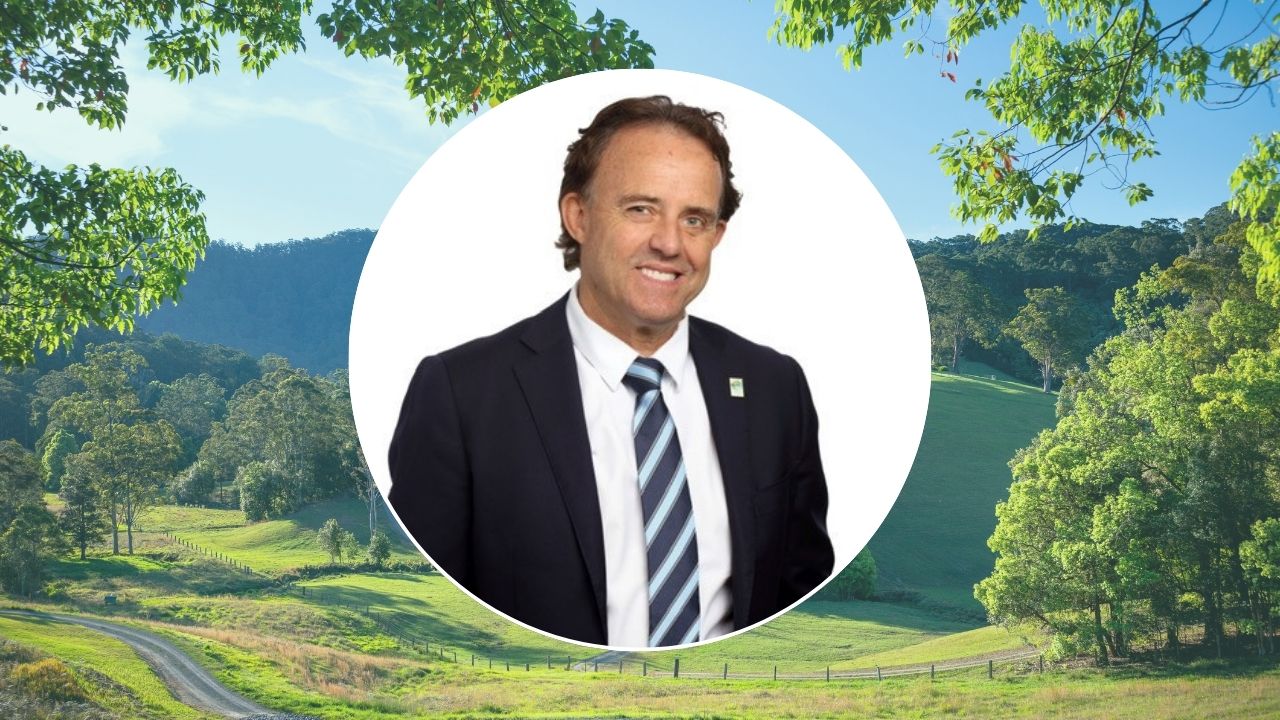
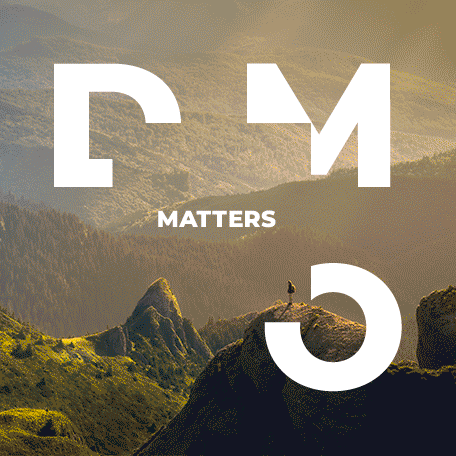
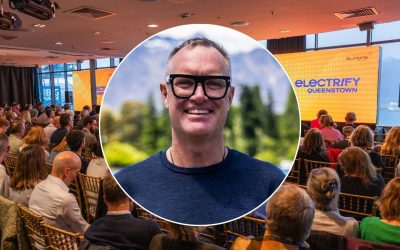
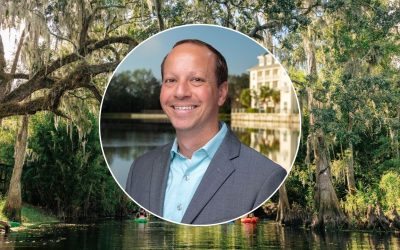
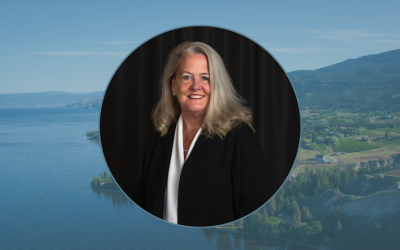
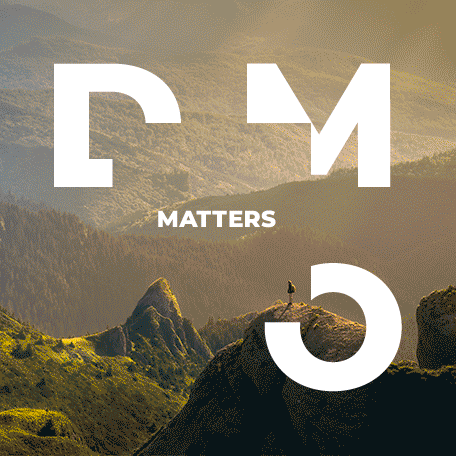


0 Comments